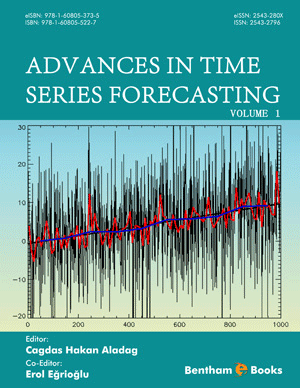Preface
Page: ii-ii (1)
Author: Horimek Abderrahmane*
DOI: 10.2174/9789815124903124010002
PDF Price: $15
Reminder on the Theory of Sets
Page: 1-10 (10)
Author: Horimek Abderrahmane*
DOI: 10.2174/9789815124903124010003
PDF Price: $15
Abstract
Accidental events in chemical and process industries may have catastrophic
consequences. The present chapter aims to discuss the hazards and risks in chemical and
process industries, where chemical species are used and/or transformed. After defining the
concept of chemical risk, the possible accidental events in the process industry are presented
based on their probability of occurrence. Some examples of relevant chemical accidents that
occurred in the past are thoroughly discussed further. Safety measures (i.e., preventive and
protective procedures) in safety and process industries and primary and secondary reactions are
also described. Finally, a screening method capable of providing a hazard evaluation by
calculating the power released during the thermal decomposition of a substance (i.e., the
CHETAH method) is presented.
Introduction to Basic Definitions in Probability
Page: 11-18 (8)
Author: Horimek Abderrahmane*
DOI: 10.2174/9789815124903124010004
PDF Price: $15
Abstract
In this chapter, the basic definitions of probability theory are presented. The logic of
presenting the results as events and their quantification, in order to know those that are highly
probable or the reverse, are all detailed. It should be noted that in this chapter, we are only
interested in knowing how to determine the value of the probability for a single random
experiment.
Combinatory Analysis
Page: 19-33 (15)
Author: Horimek Abderrahmane*
DOI: 10.2174/9789815124903124010005
PDF Price: $15
Abstract
This chapter presents in detail the calculation techniques for random experiments
with a high number of outcomes that are generally impossible to calculate classically. The
outcomes can be the number of favorable cases or that of possible ones, necessary to calculate
the probability value. It is enough to imagine the situation well, to know which law should be
used.
Calculation of Probabilities
Page: 34-45 (12)
Author: Horimek Abderrahmane*
DOI: 10.2174/9789815124903124010006
PDF Price: $15
Abstract
After learning how to determine the probability value for a single random
experiment, this chapter gives you the tools for compound random experiments. The probability
tree that graphically presents the experiment is defined first, followed by numerous details and
laws, leading to the mastery of calculation tricks for an experiment composed of n sub-experiments.
Random Variable
Page: 46-60 (15)
Author: Horimek Abderrahmane*
DOI: 10.2174/9789815124903124010007
PDF Price: $15
Abstract
After the great progress in the theory of probability as a science, the passage towards
more flexible and representative definitions and the possibility to be implemented numerically
gave the need for a new formulation. From there, the random variable came into existence.
Although random problems can be of different kinds, the random variable can be discrete or
continuous, qualitative or quantitative. This chapter is dedicated to its extended definition and
its exploitation in a simplified way.
Distribution Laws
Page: 61-72 (12)
Author: Horimek Abderrahmane*
DOI: 10.2174/9789815124903124010008
PDF Price: $15
Abstract
In this last chapter of the probability part, the laws of probability are presented. These
laws are very important even in statistics. They govern difficult phenomena by simple
mathematical formulas, obtained after a few developments. The mastery of these laws will
allow the classification of the phenomena by the amounts of the probabilities and the number
of elements in the samples (or the population).
Definitions and Calculations in Statistics
Page: 73-96 (24)
Author: Horimek Abderrahmane*
DOI: 10.2174/9789815124903124010009
PDF Price: $15
Abstract
The Statistical part was included in only one chapter given the ample details provided
for the probability part. For this, the necessary terminology in statistics is presented well as it
should be. Thereafter, the exploitation of the central tendency to determine the confidence
interval and the risk of error according to different situations are presented in detail and with
illustrative examples.
Series of Probability Exercises
Page: 97-108 (12)
Author: Horimek Abderrahmane*
DOI: 10.2174/9789815124903124010010
PDF Price: $15
Series of Statistics Exercises
Page: 109-111 (3)
Author: Horimek Abderrahmane*
DOI: 10.2174/9789815124903124010011
PDF Price: $15
Series Correction Probabilities
Page: 112-132 (21)
Author: Horimek Abderrahmane*
DOI: 10.2174/9789815124903124010012
PDF Price: $15
Series Correction Statistics
Page: 133-141 (9)
Author: Horimek Abderrahmane*
DOI: 10.2174/9789815124903124010013
PDF Price: $15
Conclusion
Page: 142-142 (1)
Author: Horimek Abderrahmane*
DOI: 10.2174/9789815124903124010014
PDF Price: $15
References
Page: 143-143 (1)
Author: Horimek Abderrahmane*
DOI: 10.2174/9789815124903124010015
PDF Price: $15
Subject Index
Page: 144-147 (4)
Author: Horimek Abderrahmane*
DOI: 10.2174/9789815124903124010016
PDF Price: $15
Introduction
Probability and Statistics: Theory and Exercises is a textbook focused on practical examples of probability theory and statistics, with the goal of giving readers a thorough understanding of mathematical relationships in these subjects. The book is designed for basic courses in probability and statistics, and is aimed primarily at non-specialists and beginner level students. The book is divided into 2 sections, respectively. Probability: Includes a primer on set theory, basic probability theory definitions and calculations, combinatorial analysis, random variables and distribution laws Statistics: Covers basic concepts of descriptive statistics Key features - Simple, clear language for easy comprehension of key concepts - Carefully chosen exercises with solutions for self-learning - Over 40 Illustrations for clear explanations - References for further reading and tutorials.












